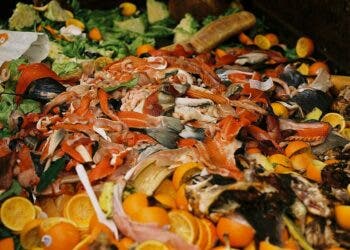
Food waste has become such a complex problem that it now seems almost unsolvable. About 1.3 billion tons of food ended up as waste in 2023, and by the end of this decade, humans will be wasting 2.1 billion tons of food every year.
Meanwhile, hunger is killing nine million people annually. We live in a strange world where on one side, one-third of the total food we produce is squandered, while on the other, thousands of people die from hunger every day.
Researchers from the University of Michigan (UM) conducted an in-depth study on this problem and developed a food-loss estimation tool. This tool highlights that improving the global cold chain can reduce global food waste by a staggering 50 percent.
“Nearly half of the food waste, about 620 million metric tons, could be eliminated by fully refrigerated food supply chains worldwide. At the same time, fully refrigerated supply chains, or “cold chains,” could cut food waste-related emissions of climate-warming greenhouse gases by 41% globally,” the study authors note.
Optimized refrigeration can make a huge difference
For their study, the UM team first collected the global food waste data from the U.N. Food and Agriculture Organization. Next, they studied and modeled food loss at different stages of the food supply chain. This information enabled their food-loss estimation tool to analyze the reduction in food waste and greenhouse gas emissions resulting from an improved cold chain.
“This study develops a food loss estimation tool to assess how improved access to the cold chain could impact food loss and its associated GHG emissions for seven food types in seven regions,” the study authors said.
The seven regions are Europe (including Russia), Industrialized Asia, Latin America, North Africa & Central Asia, North America & Oceania, South & Southeast Asia, and Sub-Saharan Africa. The seven food types are cereals, fish & seafood, fruits & vegetables, meat, milk products, oilseeds and pulses, roots and tubers.
The findings from the estimation tool revealed three valuable insights. First, compared to developed and fully industrialized parts of the world, less-industrialized regions have a higher scope of preventing food losses.
For instance, “South and Southeast Asia has the largest absolute food losses, but lowest per capita food losses under current conditions. Despite these low per capita food losses, South and Southeast Asia has the potential to experience a 45% reduction in food losses and a 54% decrease in the associated emissions under an optimized refrigeration scenario,” the study authors claim.
“In contrast, Sub-Saharan Africa has the largest absolute and per capita food loss emissions, and tremendous opportunities for both food loss (47%) and emissions reduction (66%) under optimized refrigeration conditions,” they added.
Second, when it comes to food type, meat accounts for only 10 percent of the global food waste but it alone is responsible for over 50 percent of the food-waste-related emissions due to meat’s high input requirements. Last but not least, well-managed hyper-localized food systems are even better than optimized global cold chains for reducing food waste.
This means that if we focus on setting up efficient cold chain networks at the local level, we can drastically reduce food losses and resulting emissions. Excited with these findings, Aaron Friedman-Heiman, the lead author of the study and a UM student, said:
“I was surprised to find the scale of our opportunity for reducing food loss and waste globally, Approximately half of the roughly 1.3 billion tons of food that goes to waste annually can be solved through food supply-chain optimization.”
Better cold chains would benefit all, but there’s a catch
The study authors suggest that their food-loss estimation tool is of great use to each and everyone involved in the food supply chain.
For instance, farmers, food suppliers, and retailers can employ the food-loss estimation model to identify loopholes in their refrigeration systems and optimize them. On the other hand, governments and nonprofits can use the model to track and reduce food losses. They can further use this information to mitigate hunger and climate change.
“Improved supply chains could lead to increased access and availability of food for human consumption, potentially redistributing food to address issues of global hunger,” the study authors note.
However, the study also has some limitations. For example, it takes into account the emissions associated with food waste but doesn’t consider the emissions that would result from the operations of an enhanced cold chain network. The researchers are also not sure how an improved refrigeration system will affect the nutritional quality of food.
Moreover, “in regions that lack the underlying infrastructure necessary for an effective cold chain, an ineffective cold chain coupled with a diet-dependent upon cold chain infrastructure could result in greater food loss, food insecurity, and emissions while potentially weakening cultural heritage and self-sufficiency,” the study authors added.
Therefore, it is important to ensure that cold chains are improved and operated in a thoughtful, and sustainable way. Plus, various social, cultural, and local factors must be considered before undertaking the huge task of optimizing the global refrigerated supply chain.
The study is published in the journal Environmental Research Letters.






